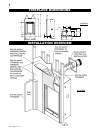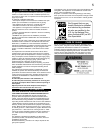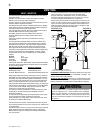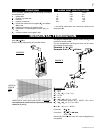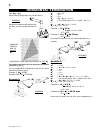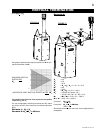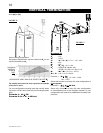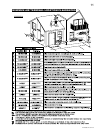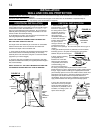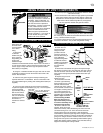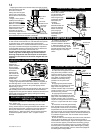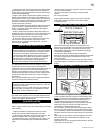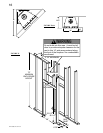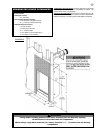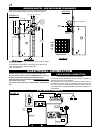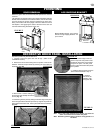Special offers from our partners!

Find Replacement BBQ Parts for 20,308 Models. Repair your BBQ today.

12
W415-0665 / B / 02.11.08
INSTALLATION
HORIZONTAL INSTALLATION
HORIZONTAL VENT SECTIONS: A minimum clearance of 2” all around the vent pipe on all horizontal runs to combustibles is required.
Use firestop spacer W010-1799 (supplied).
VERTICAL VENT SECTIONS: A minimum of 1” all around the vent pipe on all vertical runs to combustibles is required except for
clearances in fireplace enclosures. Use firestop spacer W500-0096 (not supplied).
WALL AND CEILING PROTECTION
This application occurs when venting through an exterior wall.
Having determined the correct height for the air terminal location,
cut and frame a hole in the exterior wall 11 3/4“ wide by 11 3/4“
high to accommodate the firestop assembly. Dry fit the firestop
assembly before proceeding to ensure the brackets on the rear
surface fit within the horizontal framing.
A
s an alternative to framing, the vent pipe can be enclosed in the
wall using Napoleon® vent sleeve VS47KT.
NOTE: THE FIRESTOP ASSEMBLY MUST BE INSTALLED
WITH THE VENT SHIELD TO THE TOP.
The length of the vent shield may be cut shorter for combustible
walls that are less than 8 1/2" thick but the vent shield must
extend the full depth of the combustible wall.
1. Apply a bead of caulking (not supplied) around the outer edge
of the inside surface of the firestop assembly, fit the firestop
assembly to the hole and secure using the 4 screws W415-0026
(supplied in your manual baggie).
2. Once the vent pipe is installed in its final position, apply high
temperature sealant W573-0002 (not supplied) between the pipe /
liner, and the firestop.
NOTE: DO NOT FILL THE CAVITY BETWEEN THE PIPE AND
THE FIRESTOP SLEEVE WITH ANY TYPE OF MATERIAL.
VERTICAL INSTALLATION
1. Determine the air
terminal location, cut and
frame 9 3/4” openings in
the ceiling and the roof to
provide the minimum 1“
clearance between the
vent pipe and any
combustible material. Try
to center the vent pipe
location midway between
two joist to prevent
having to cut them. Use
a plumb bob to line up
the center of the openings. Do not fill this space with any type of
material.
A vent pipe shield will prevent any materials such as insulation,
from filling up the 1" air space around the pipe. Nail headers
between the joist for extra support.
2. Apply a bead of caulking
(not supplied) to the
framework or to the Wolf
Steel vent pipe shield plate
or equivalent (in the case of
a finished ceiling), and
secure over the opening in
the ceiling. A firestop must be placed on the bottom of each
framed opening in a roof or ceiling that the venting system passes
through. Apply a bead of caulking (not supplied) all around and
place a firestop spacer over the vent shield to restrict cold air from
being drawn into the room or around the fireplace. Ensure that
both spacer and shield maintain the required clearance to
combustibles. Once the vent pipe is installed in its final position,
apply sealant between the vent pipe and the firestop spacer.
3. In the attic, slide the vent pipe
collar down to cover up the open
end of the shield and tighten. This
will prevent any materials, such as
insulation, from filling up the 1" air
space around the pipe.
CAULKING
VENT PIPE
SHIELD
VENT PIPE
SHIELD
VENT
PIPE
COLLAR
FIRESTOP
UNDERSIDE
OF JOIST
9
3
/4”
9
3
/4”
11
3
/4”
11
3
/4”
DETER-
MINE
THE
CORRECT
HEIGHT
CAULKING
FIRESTOP
SPACER
VENT
SHIELD
FINISHING
MATERIAL
FIGURE 15
FIGURE 16
FIGURE 17
FIGURE 18



